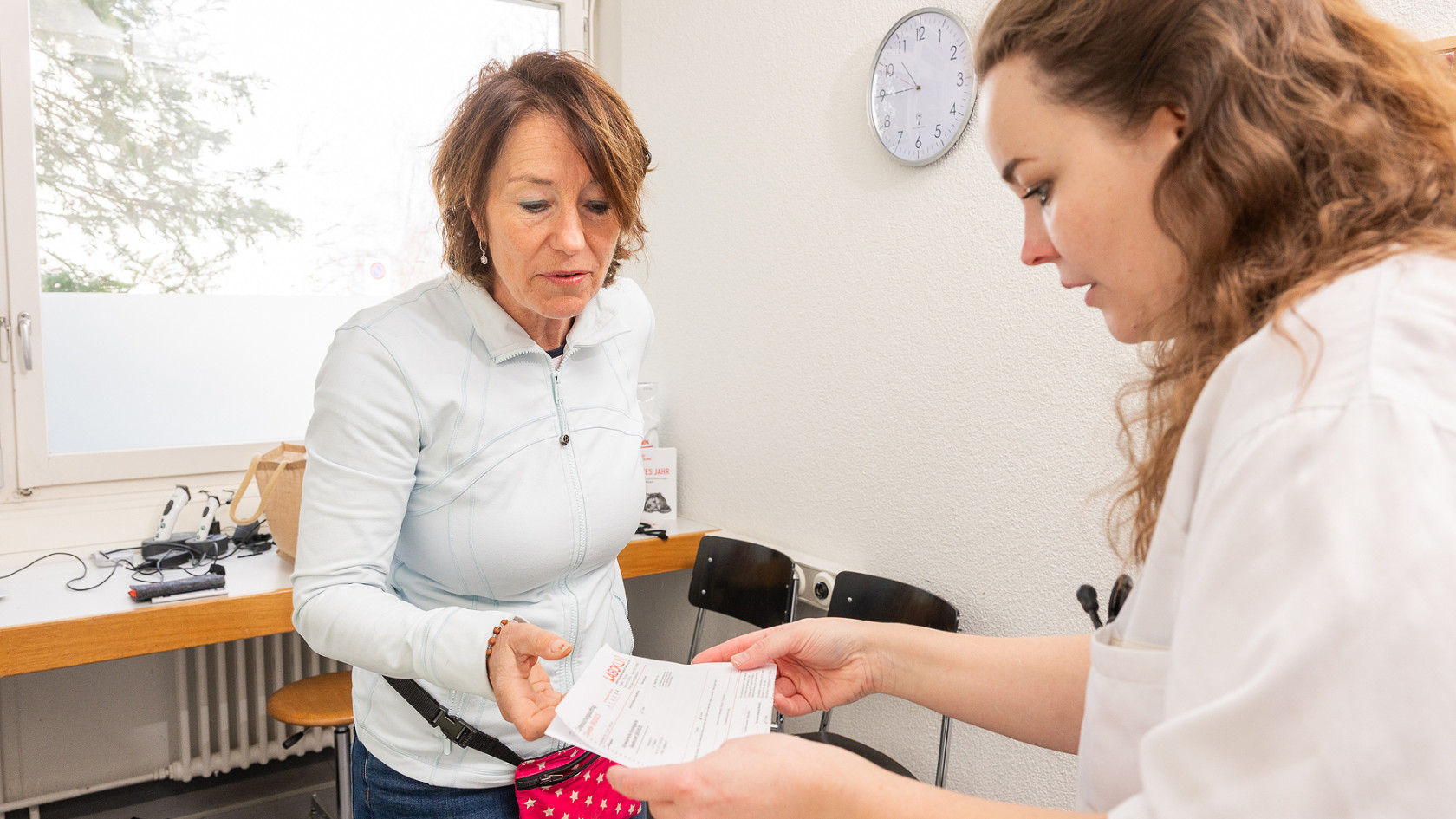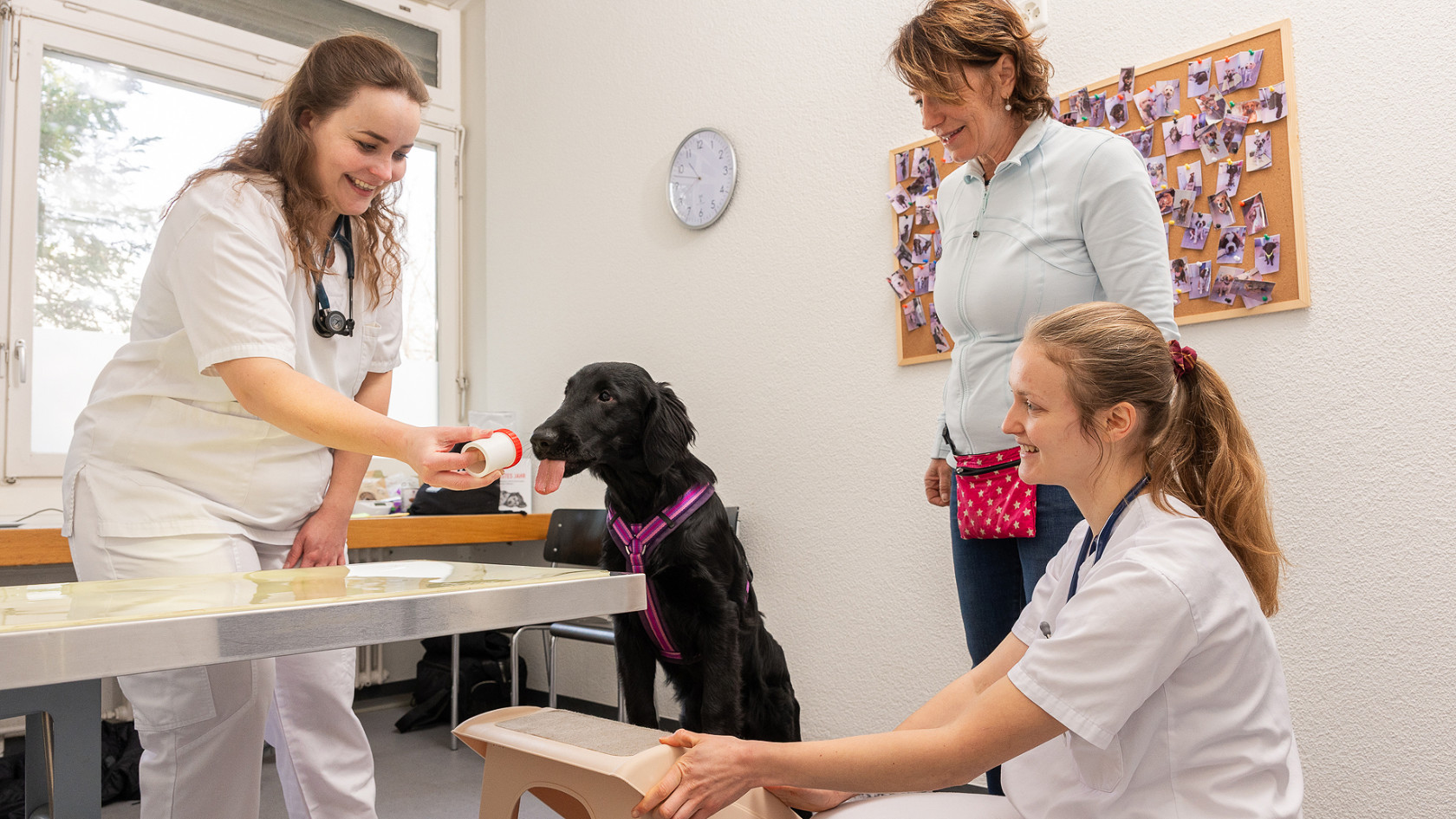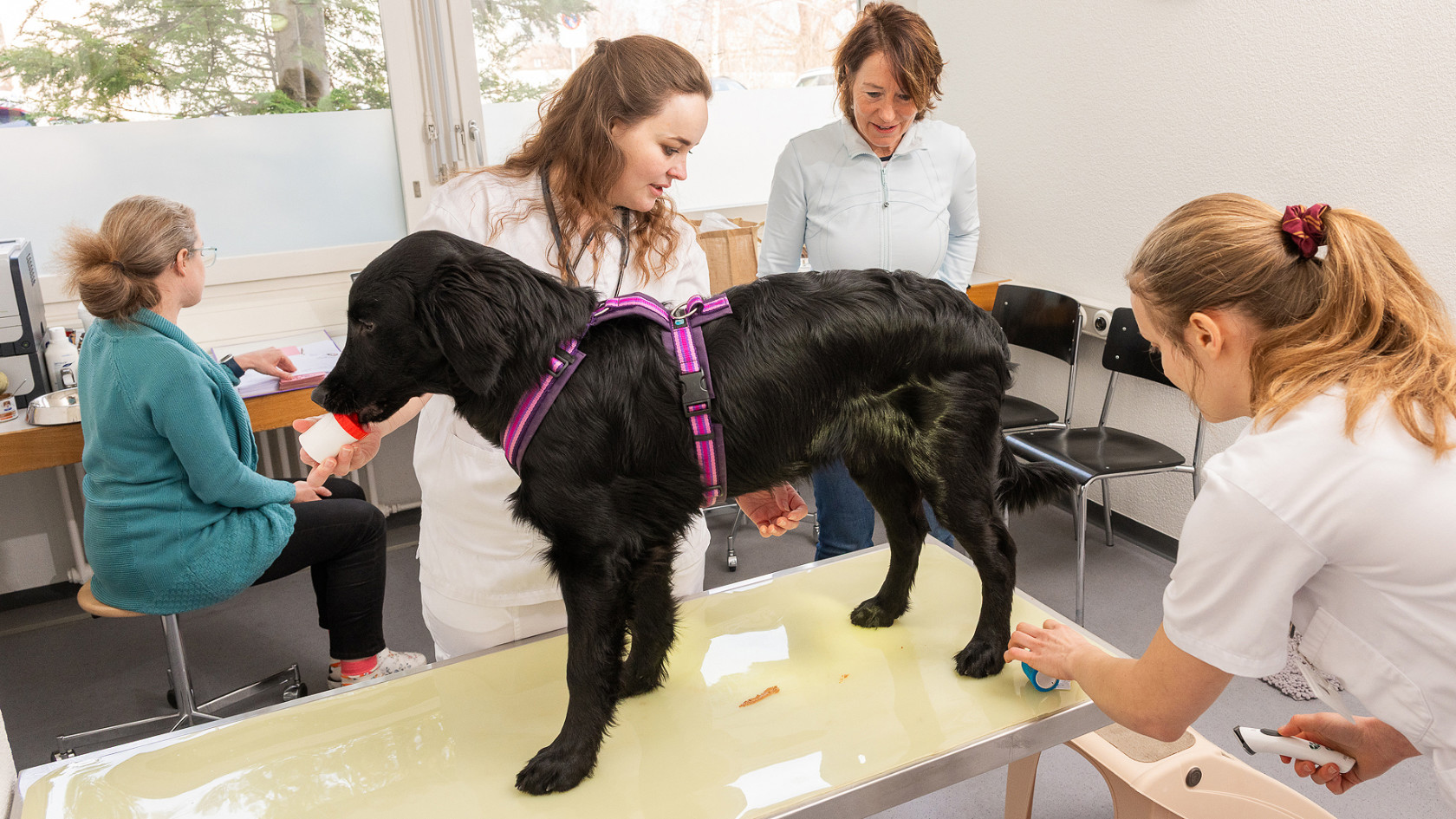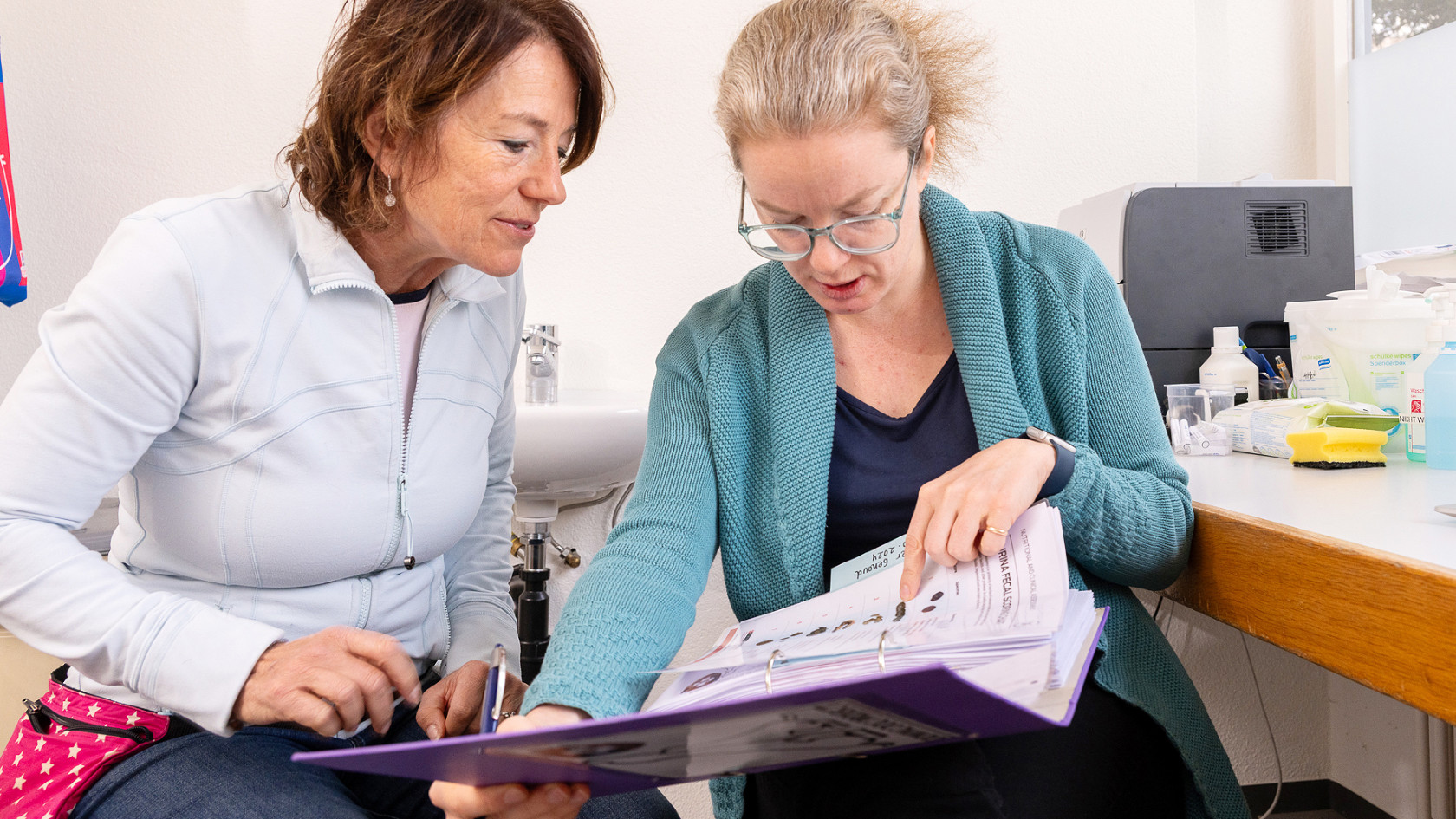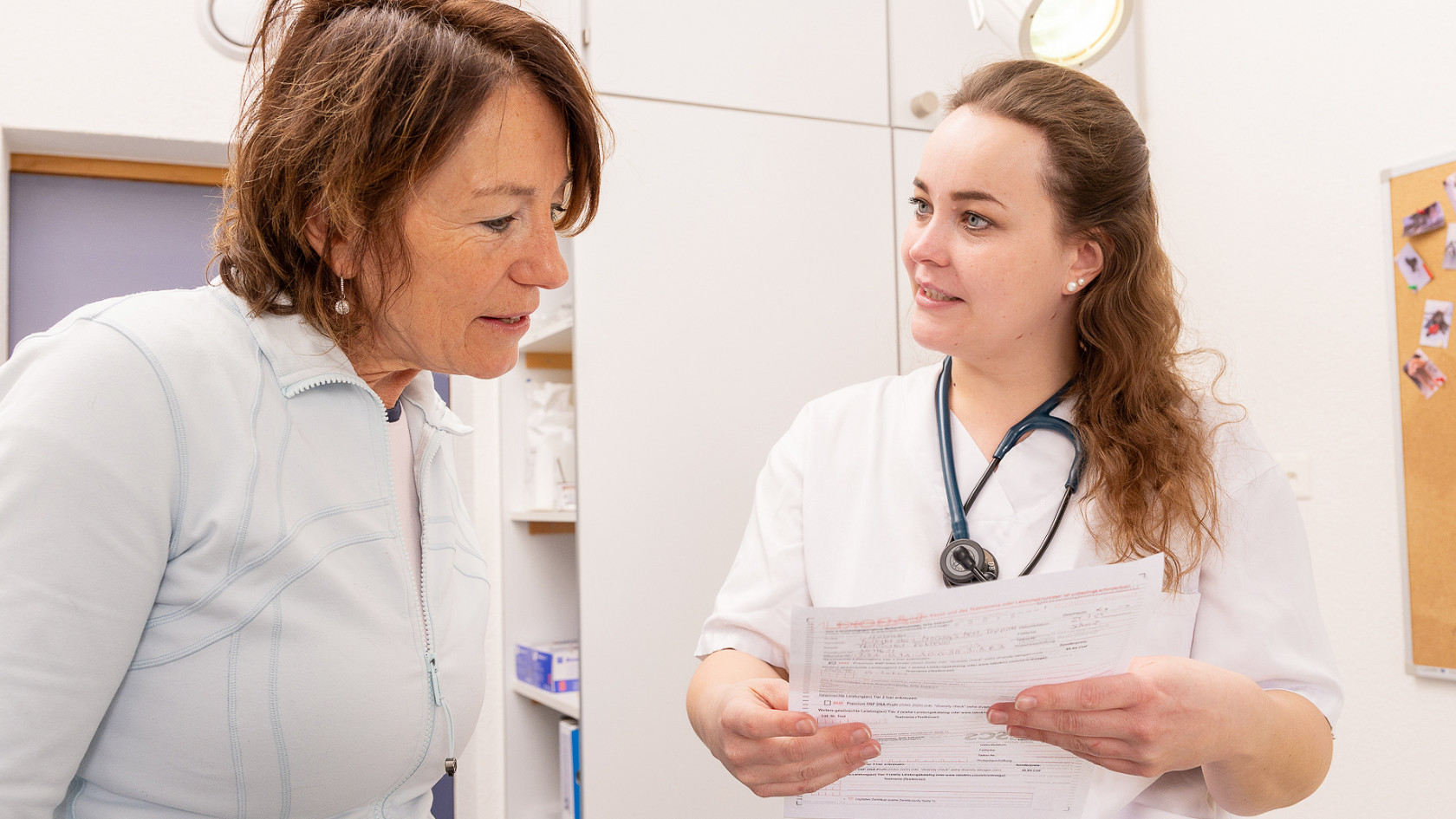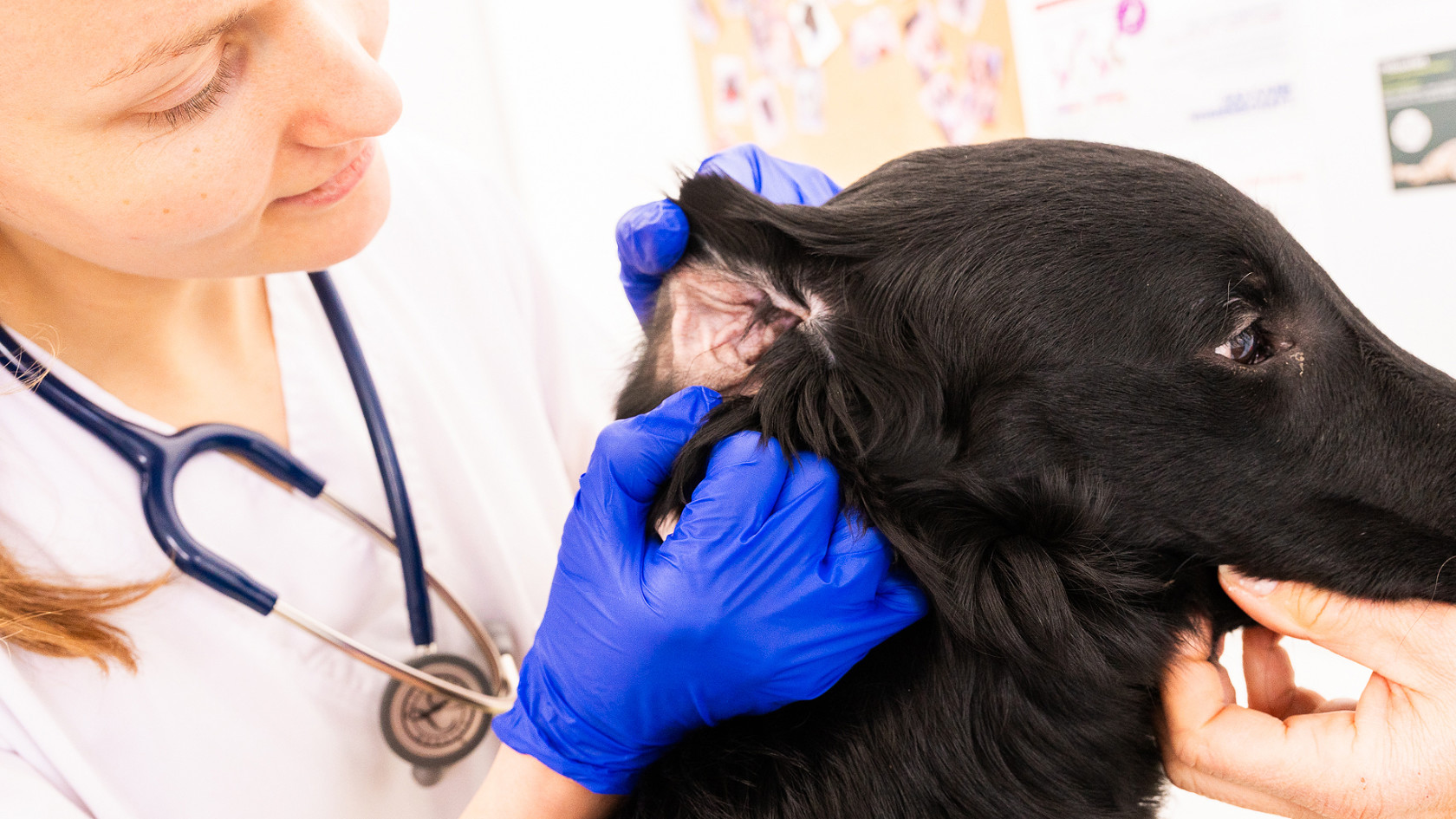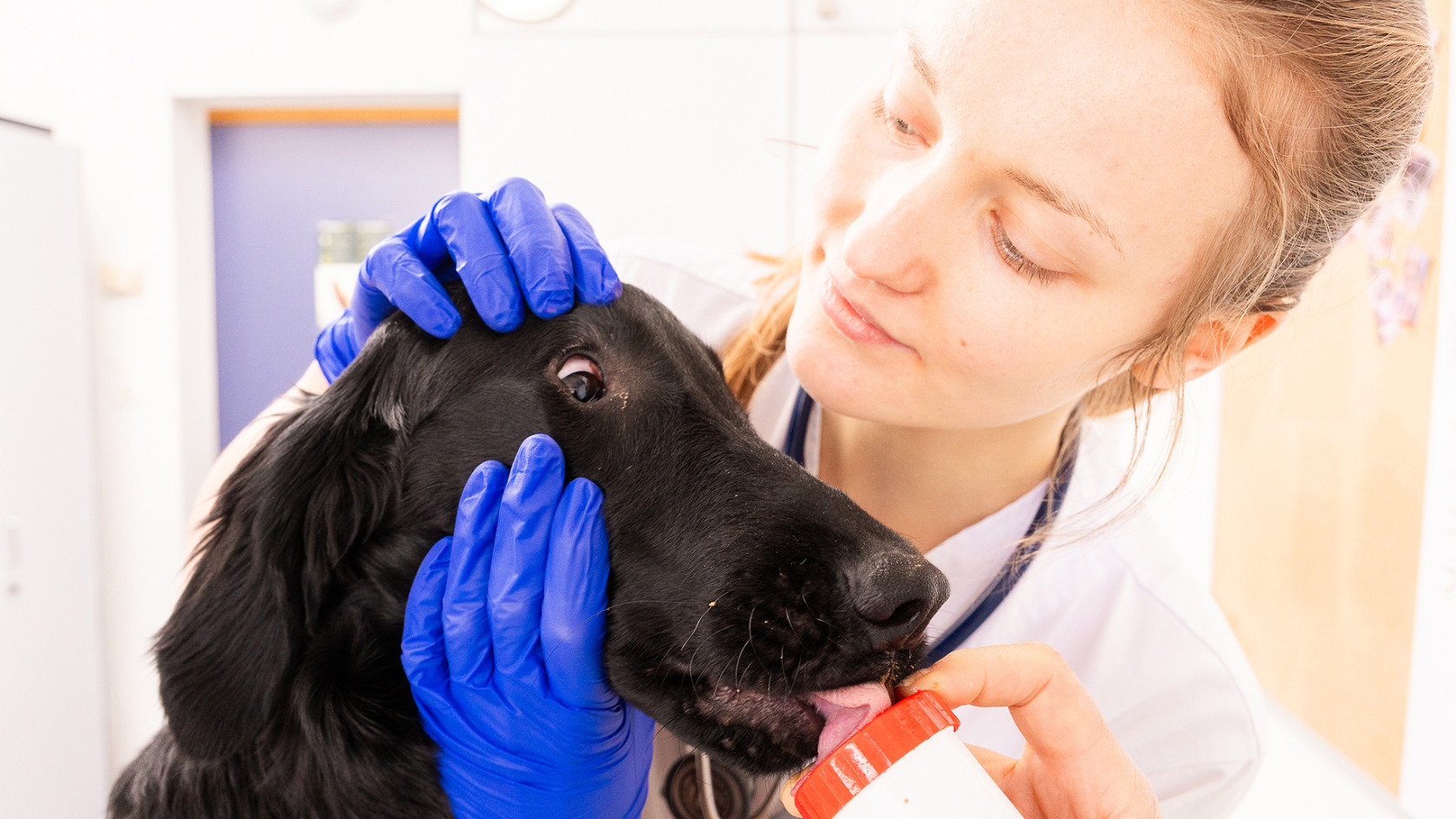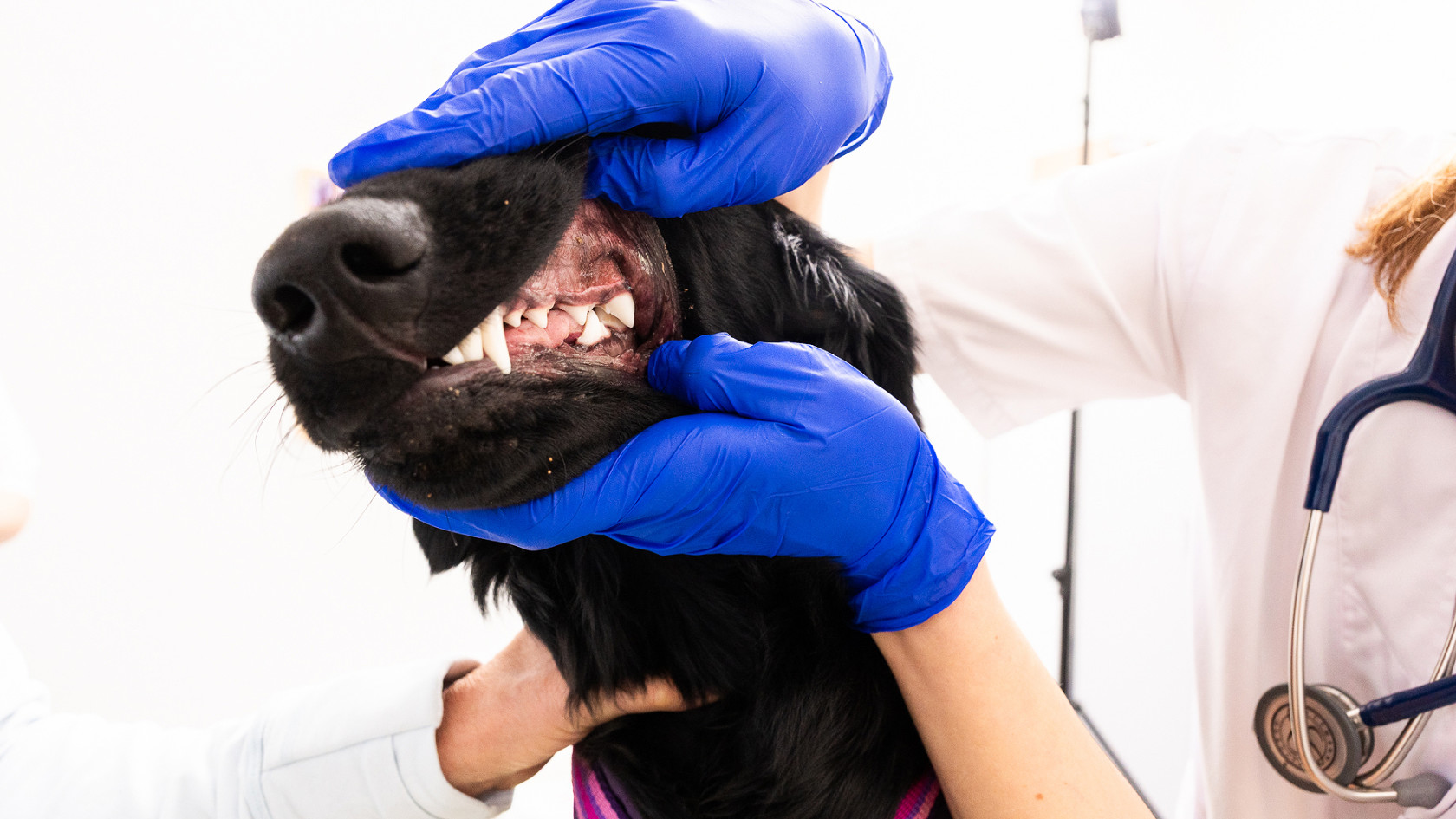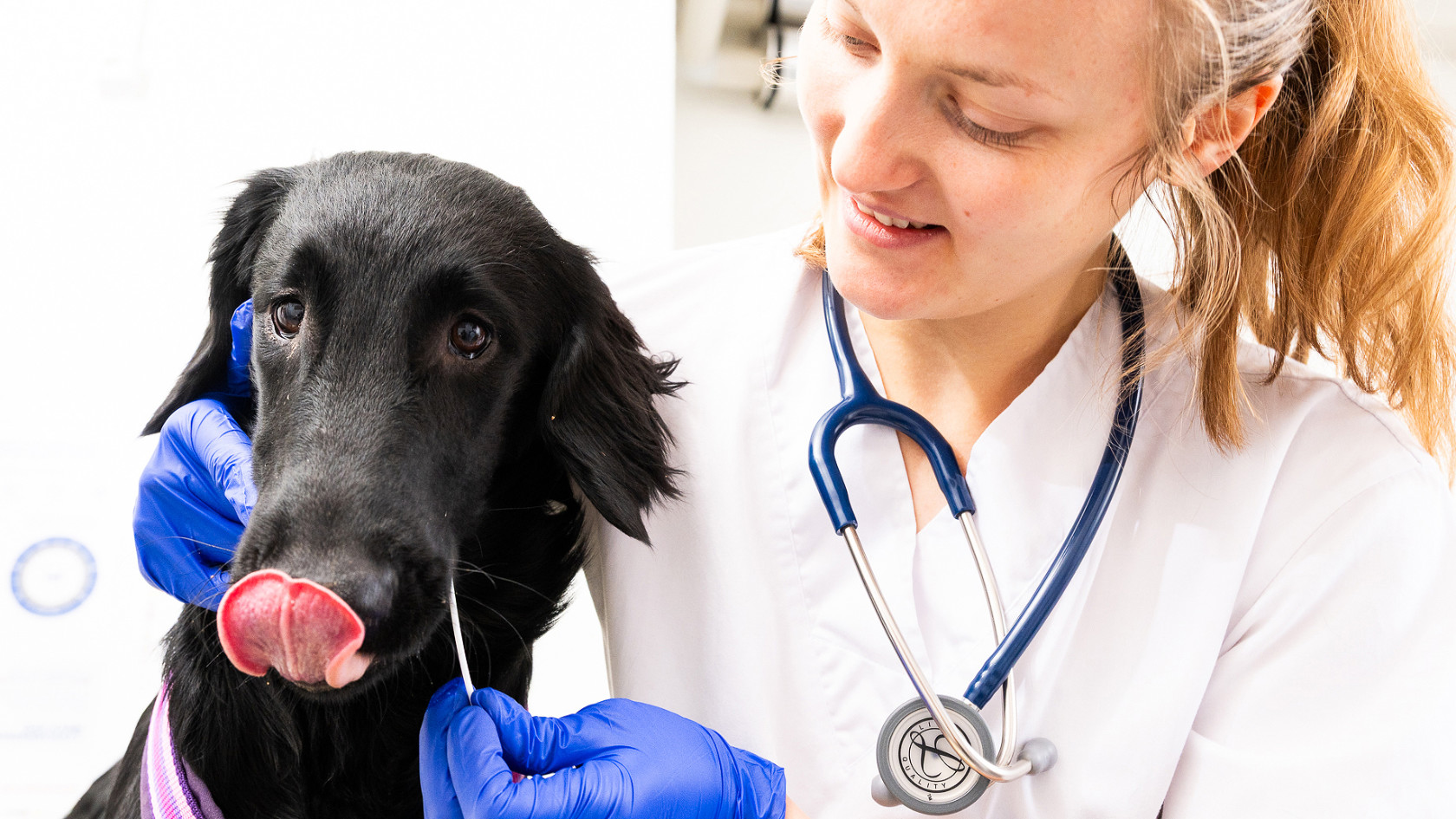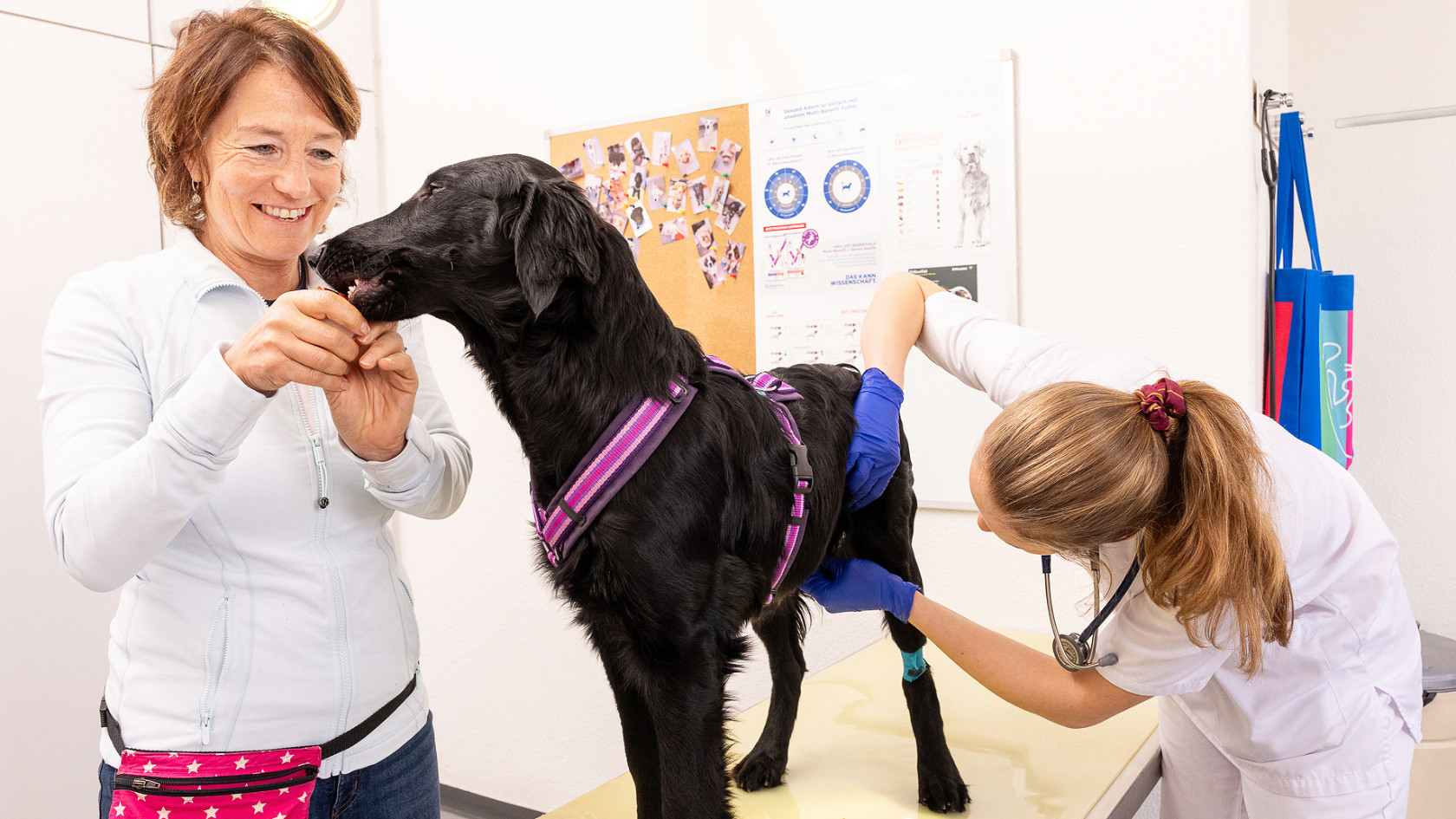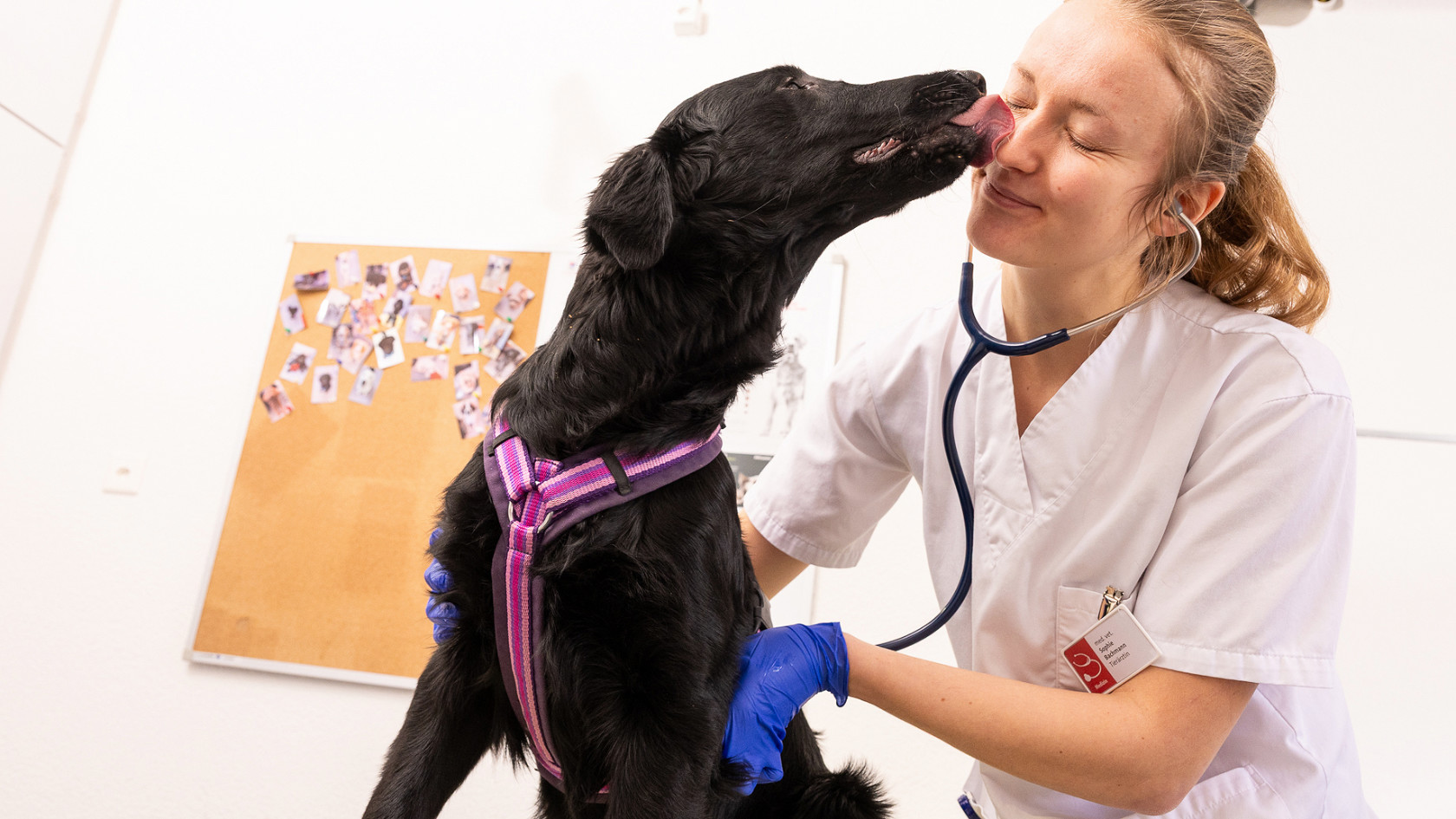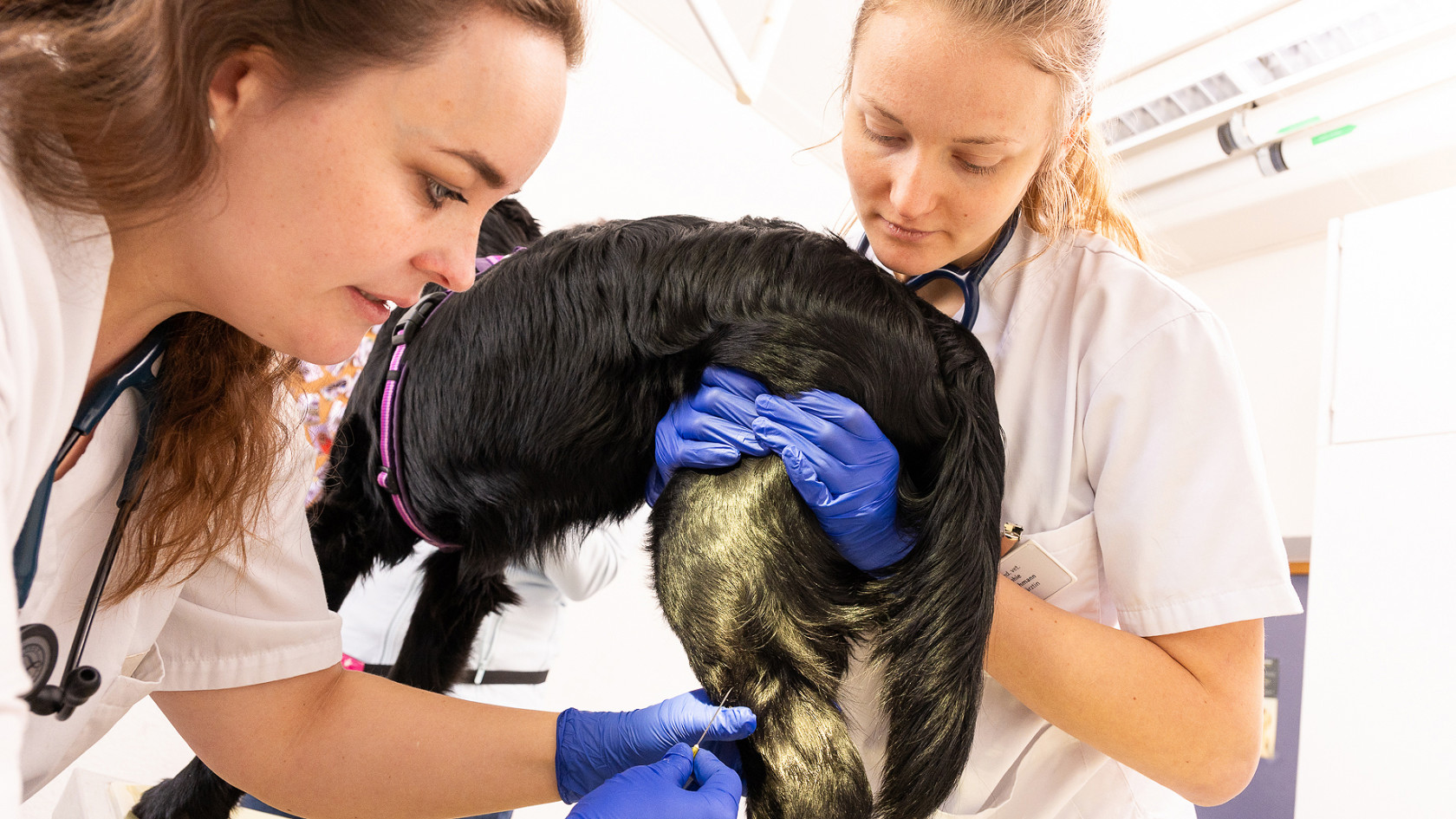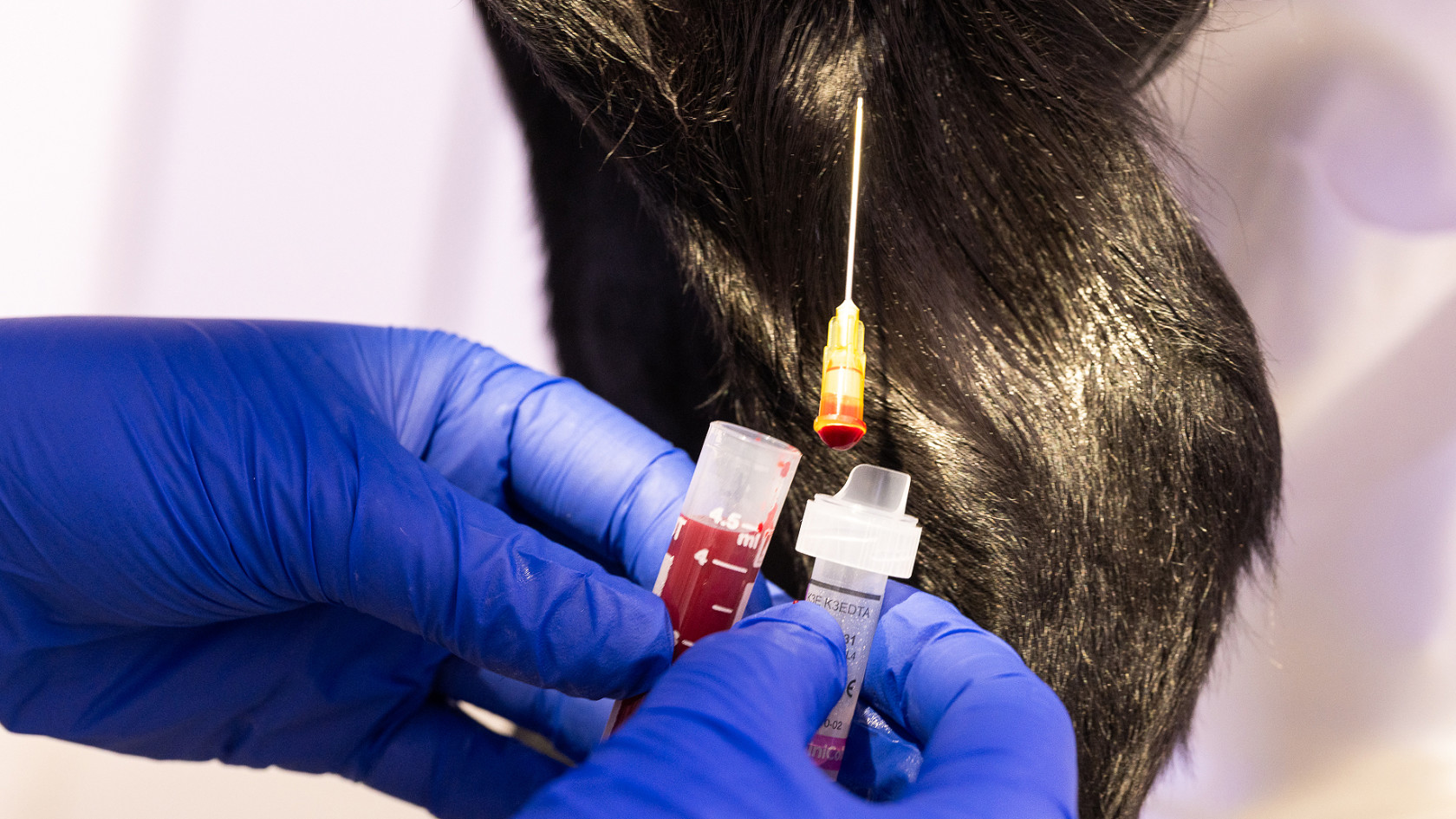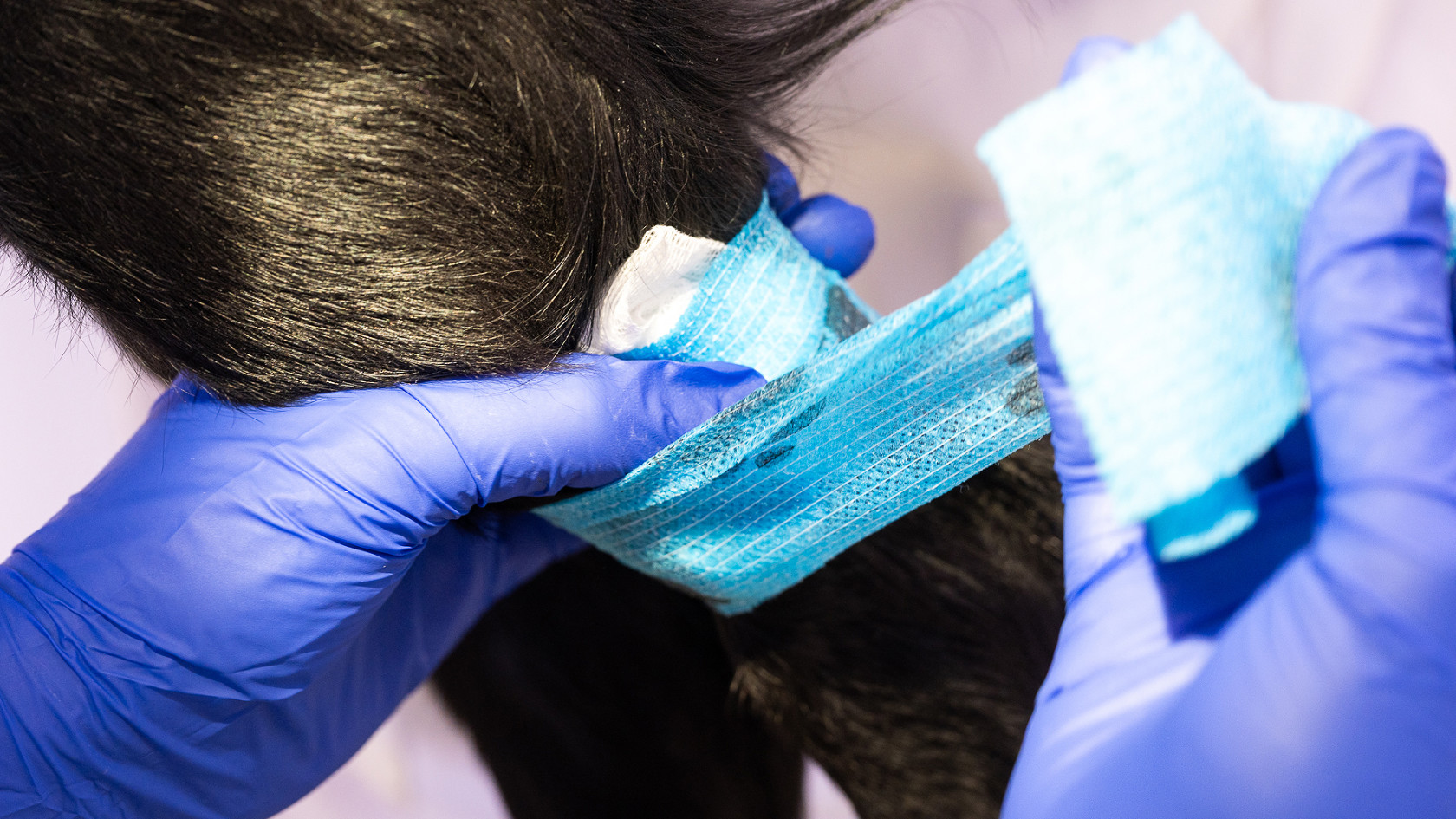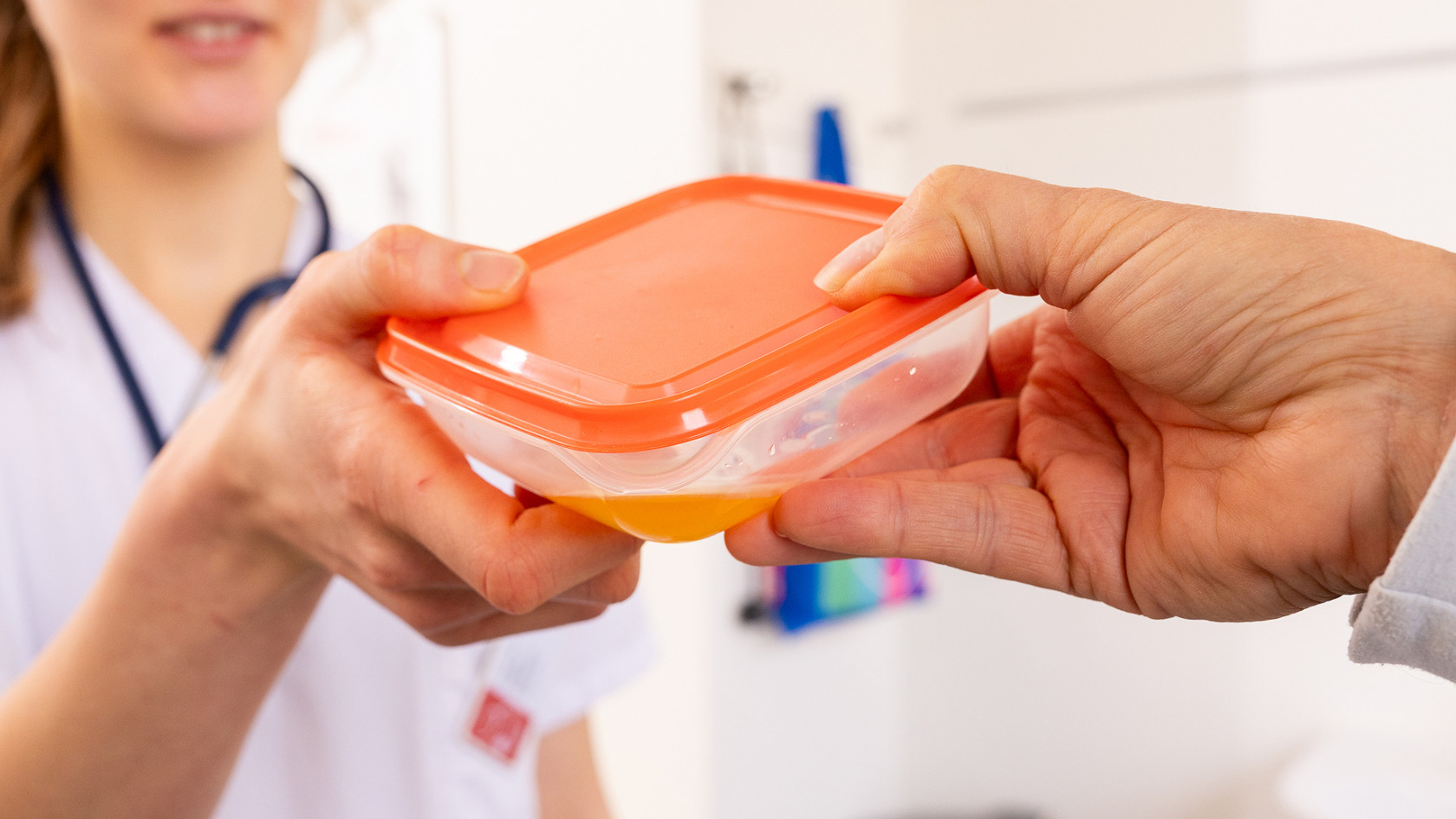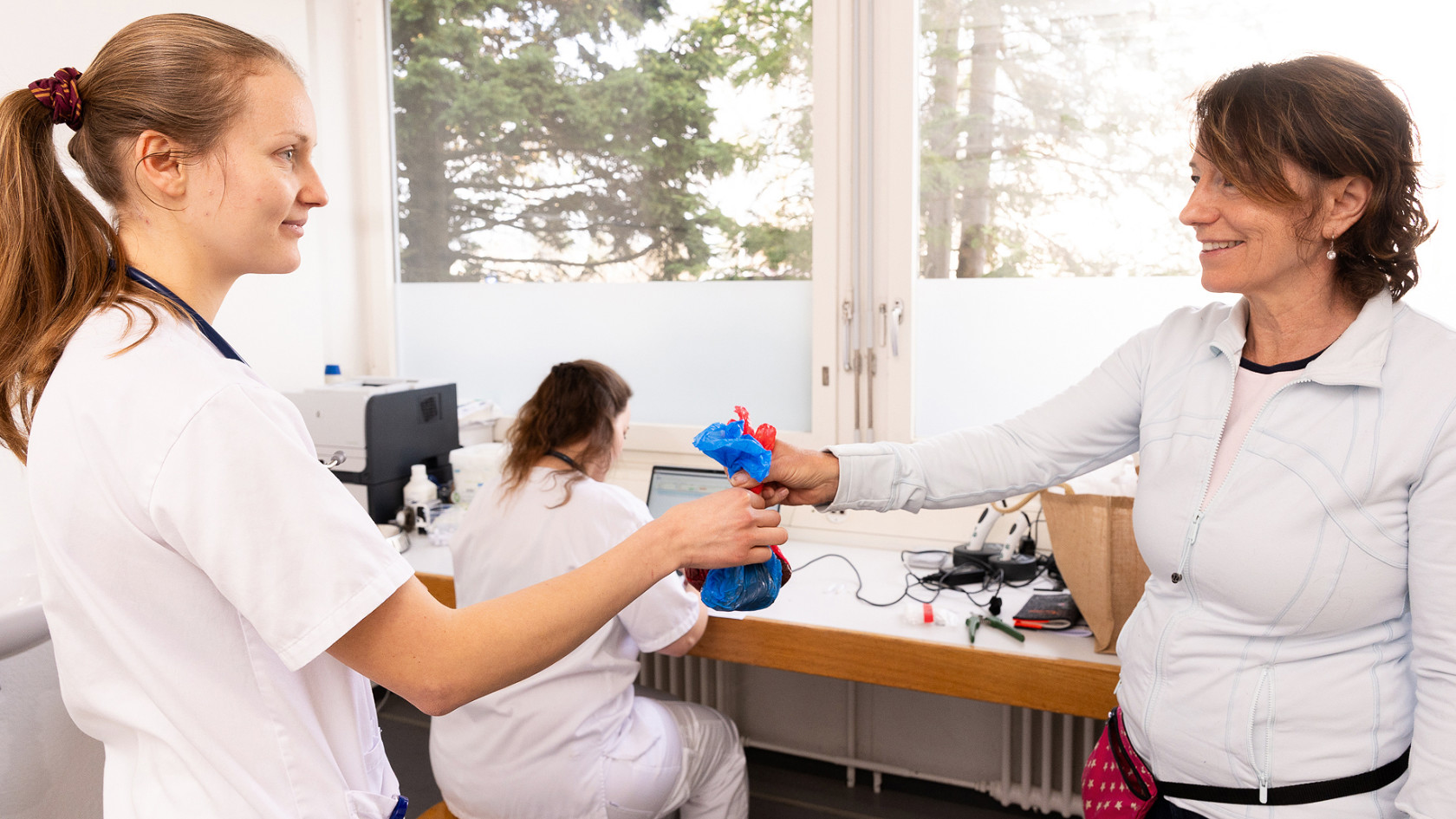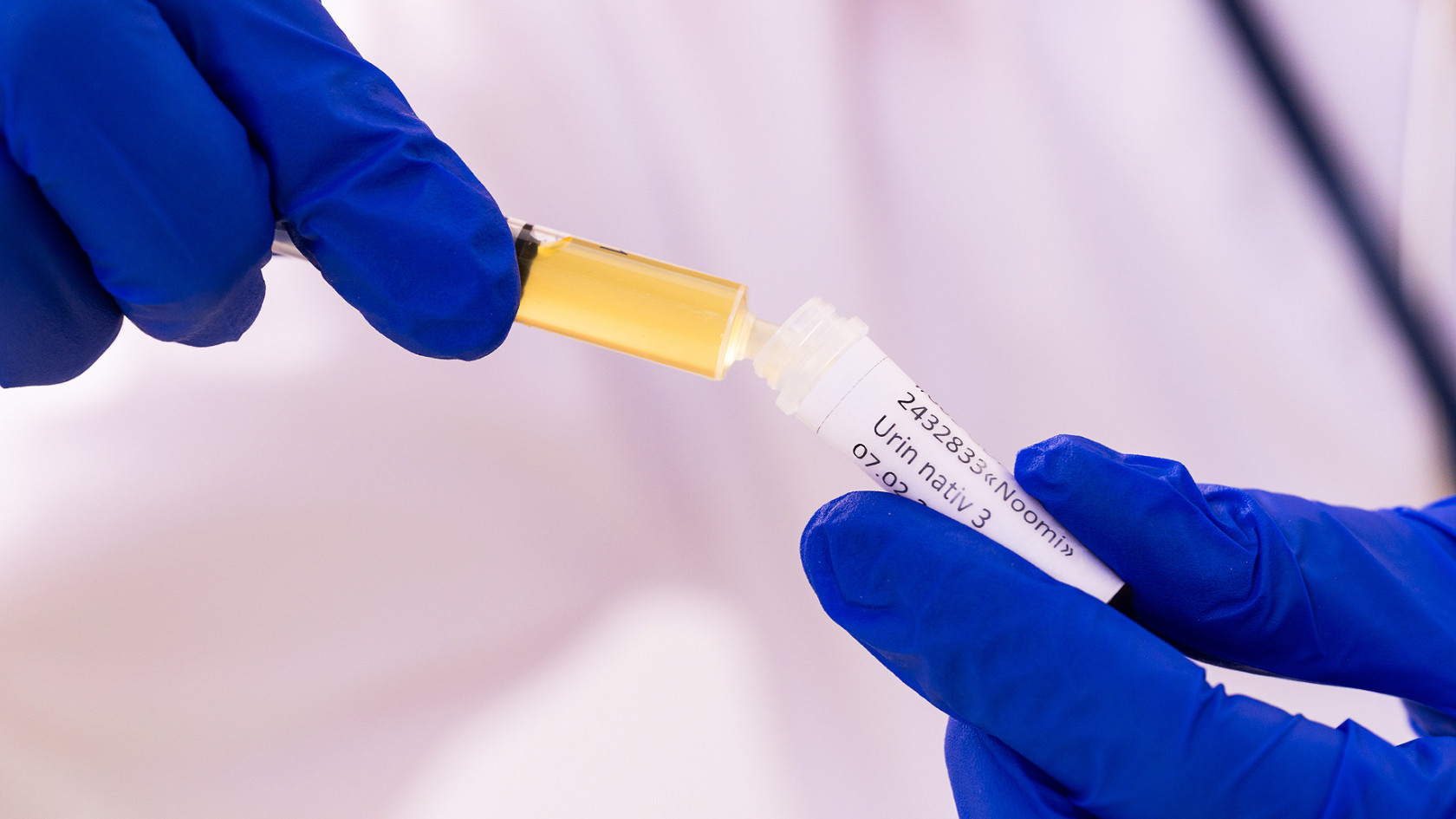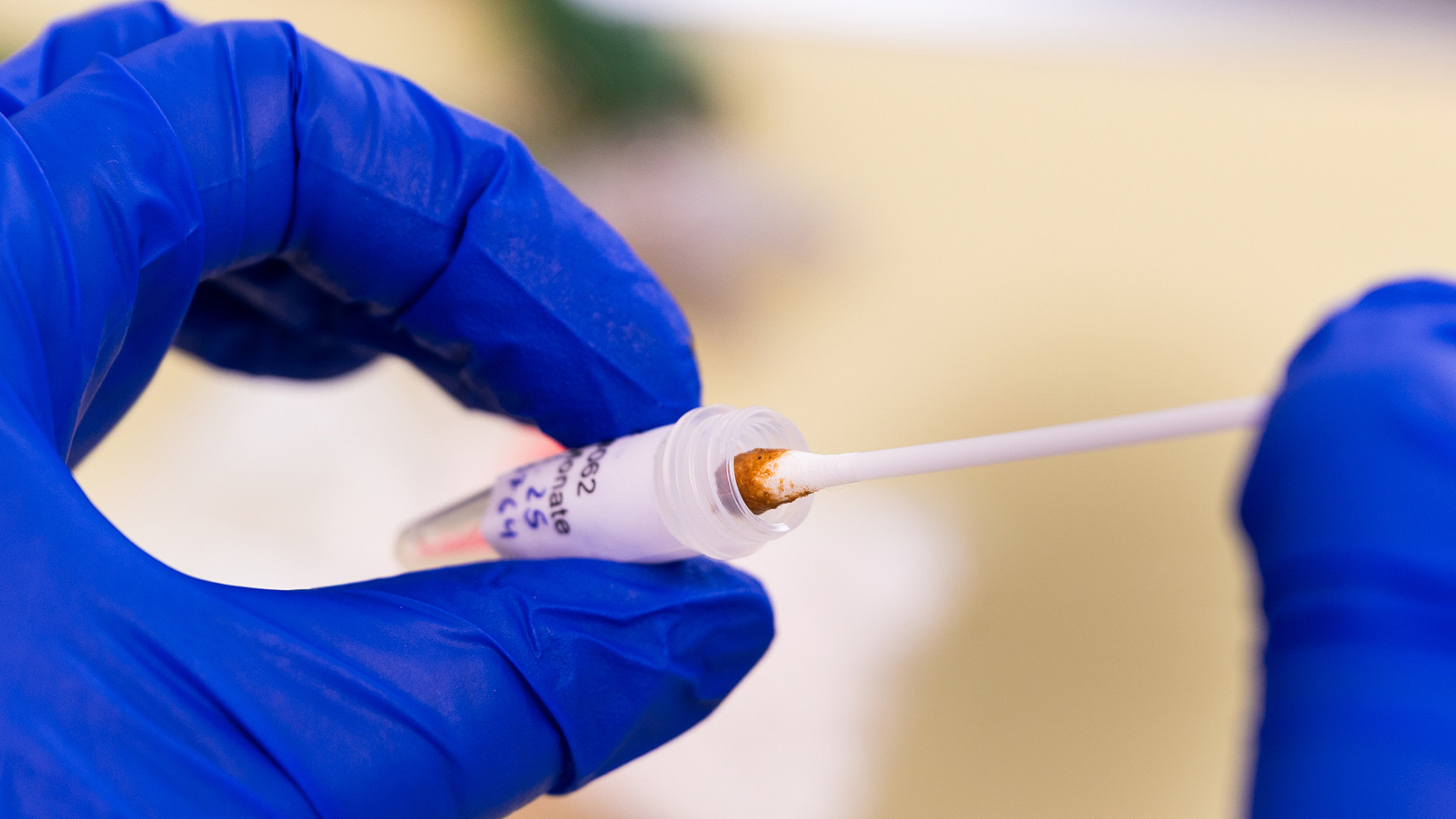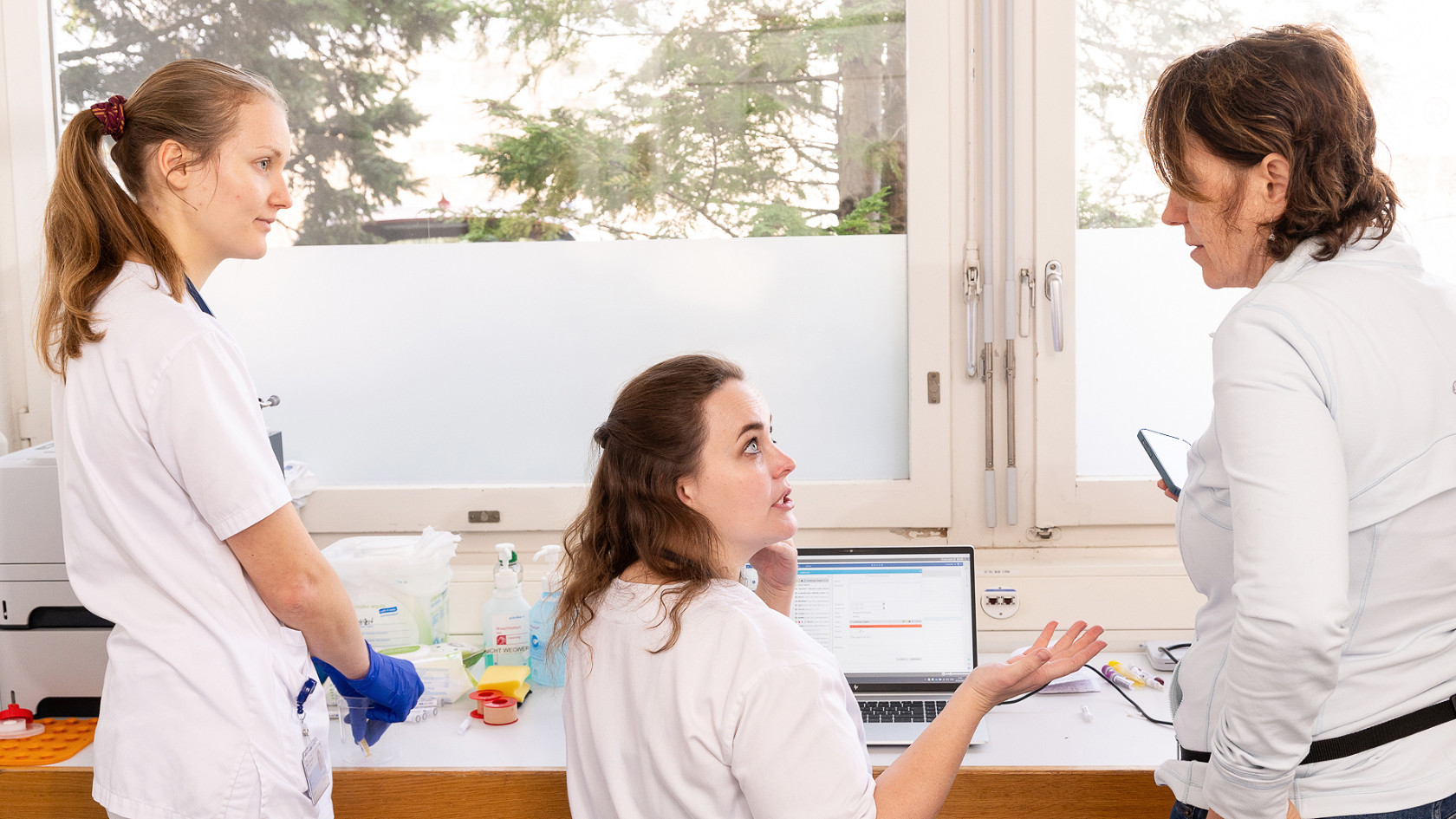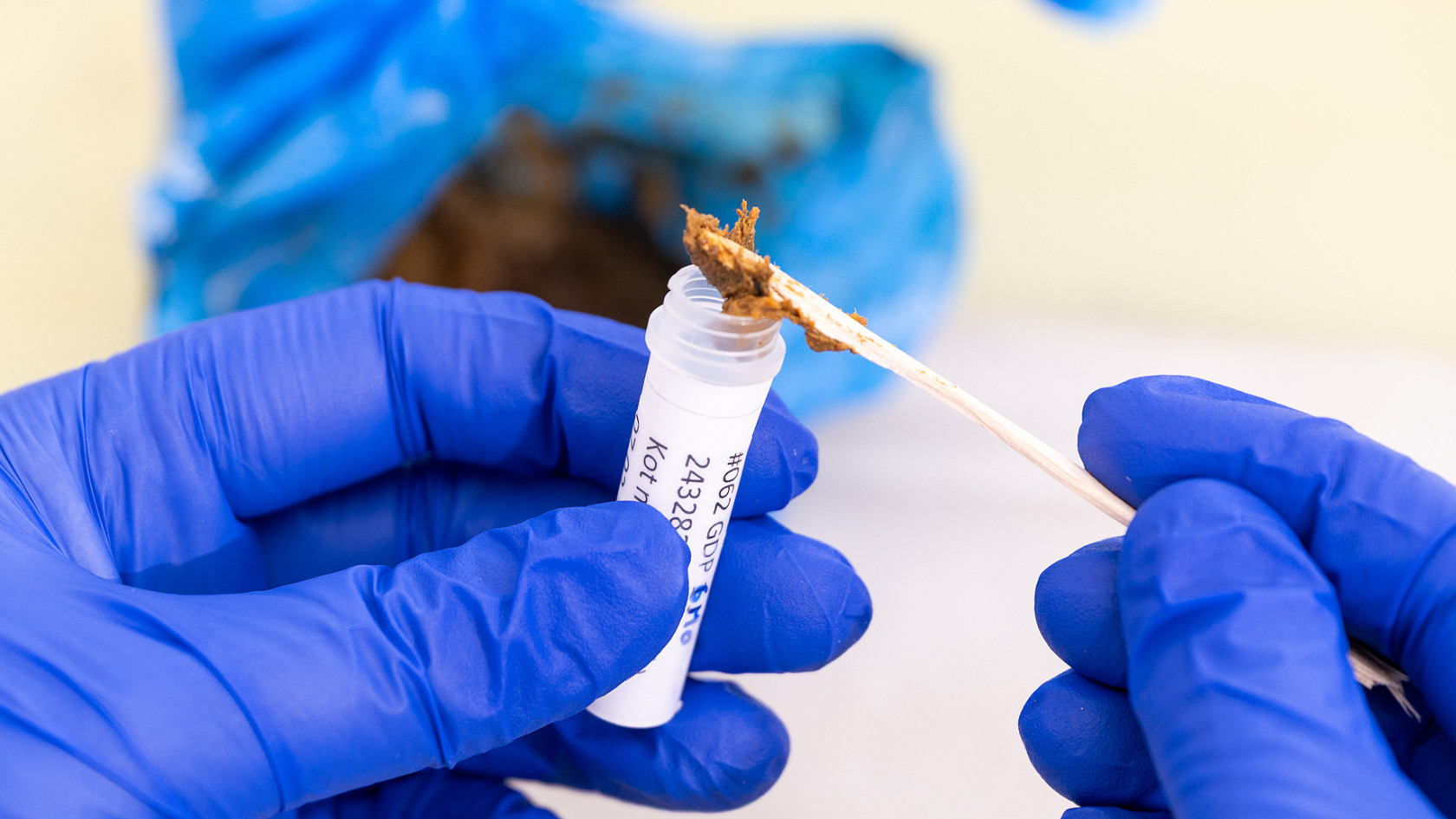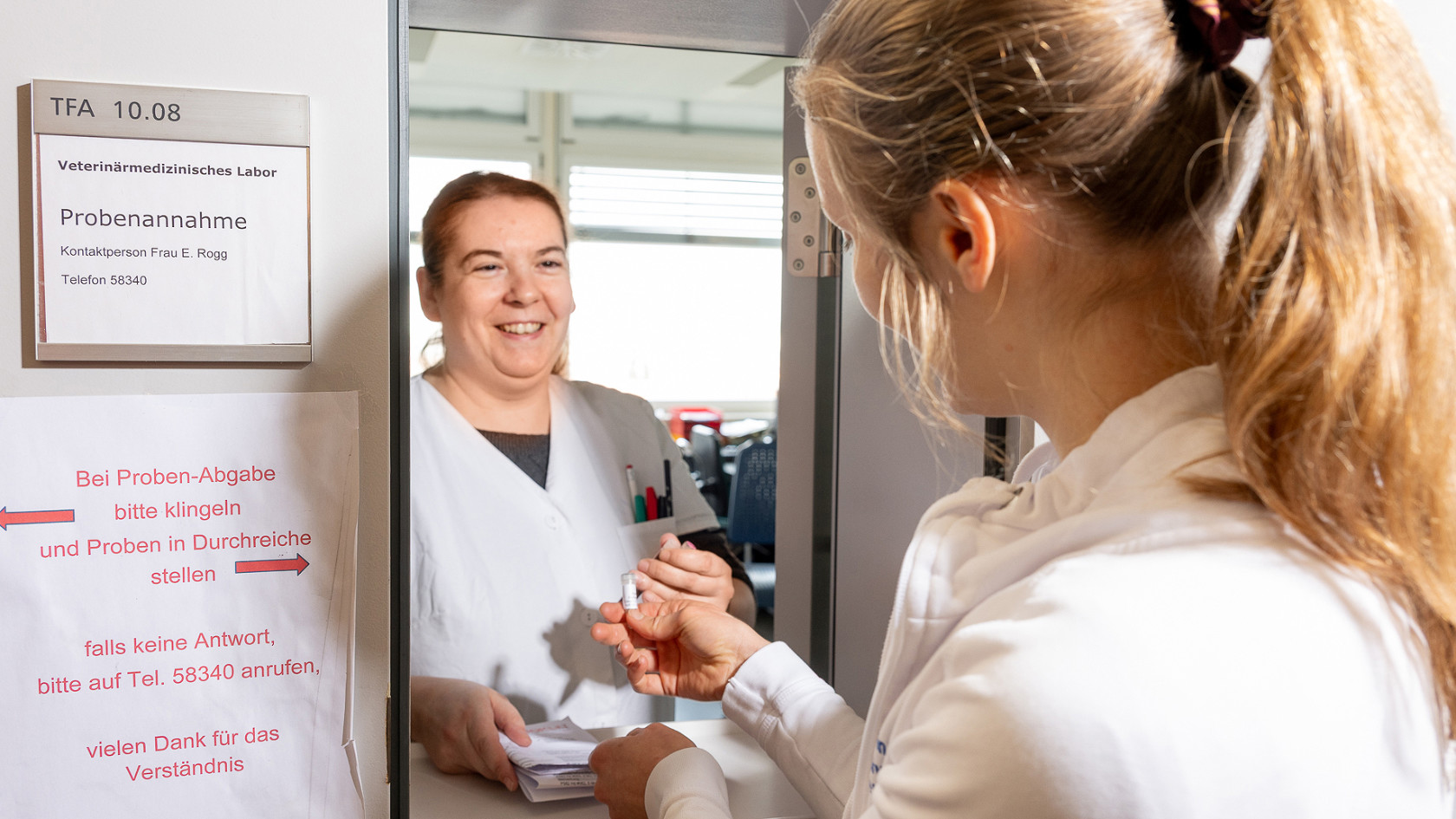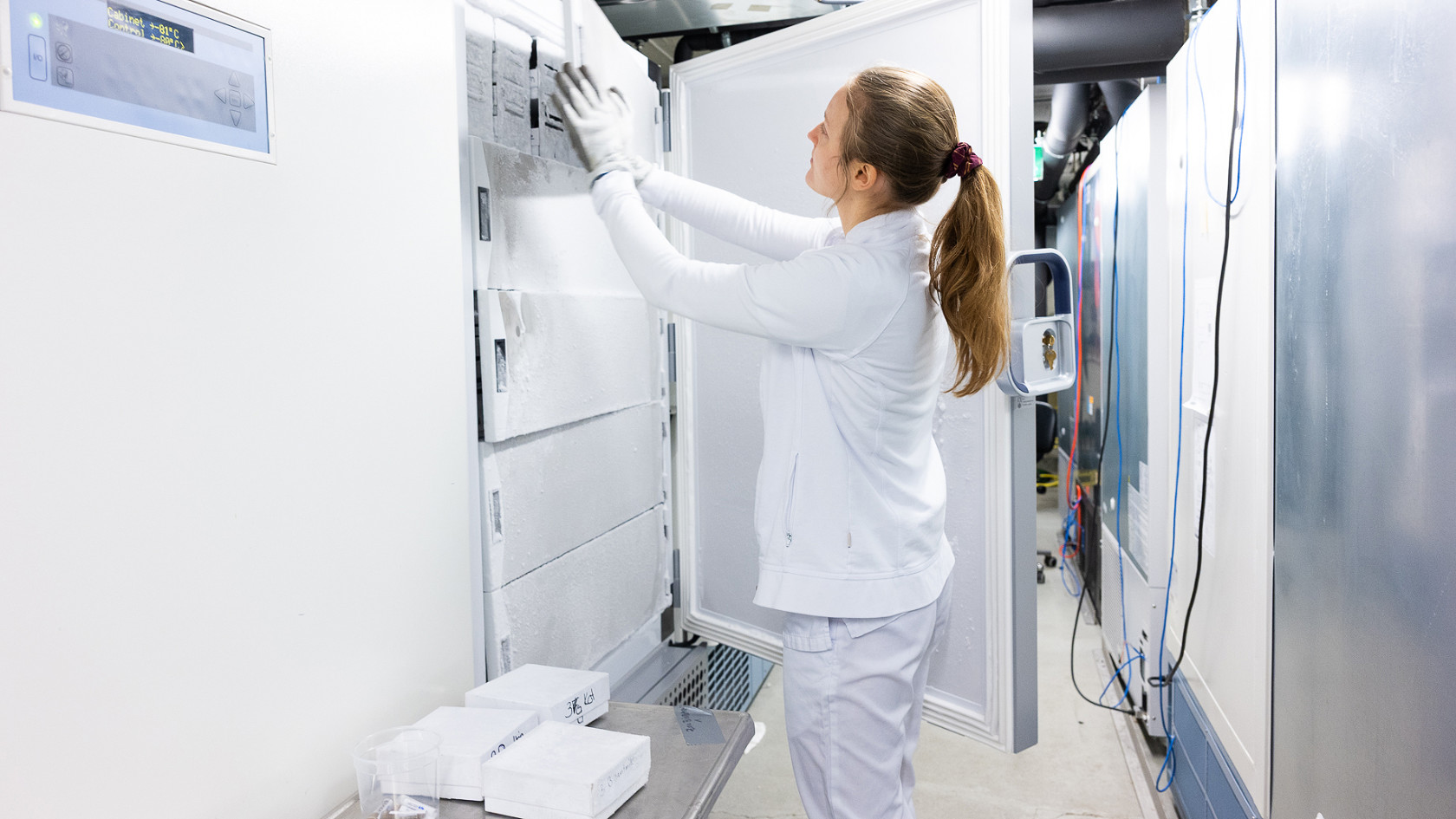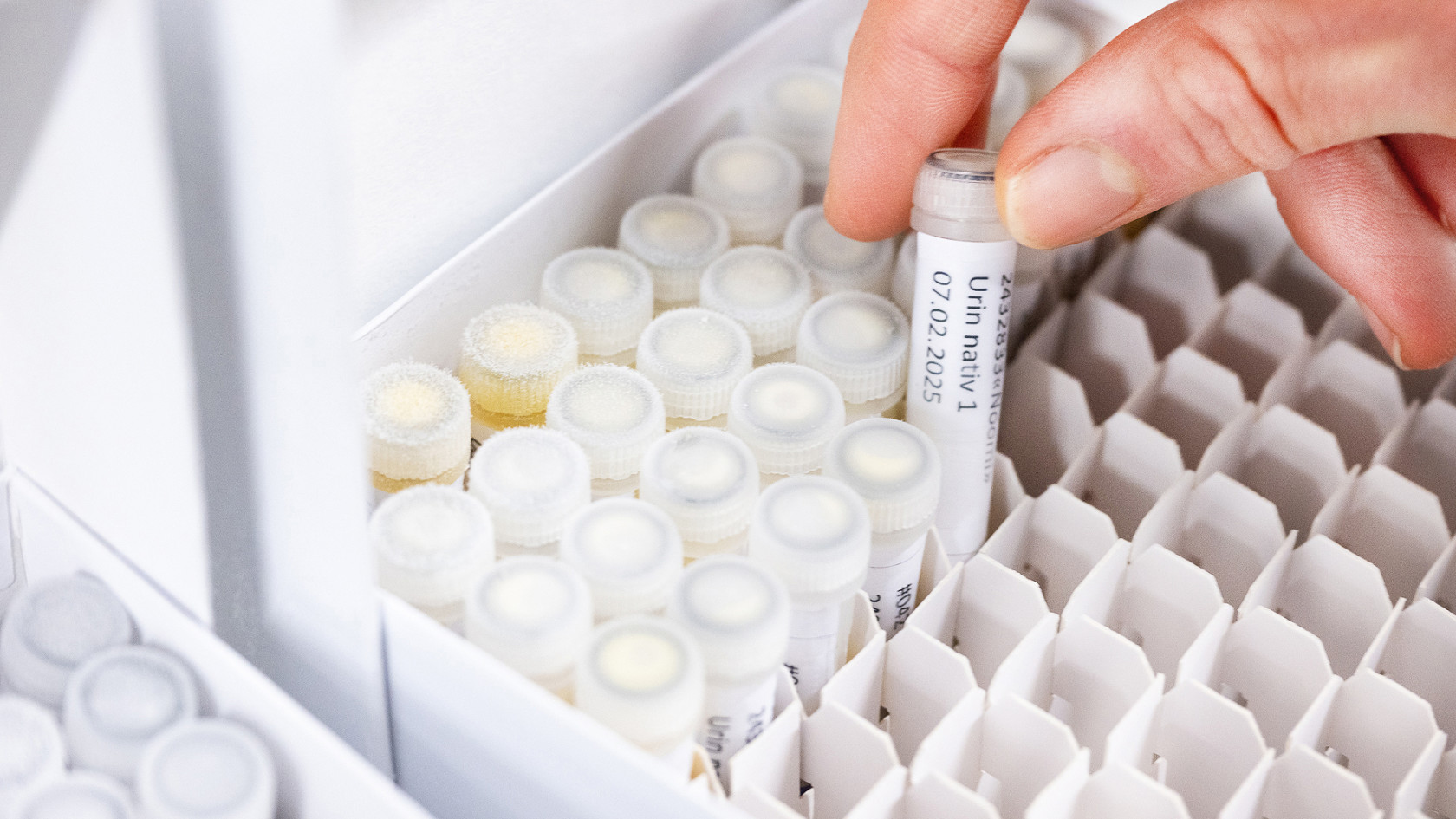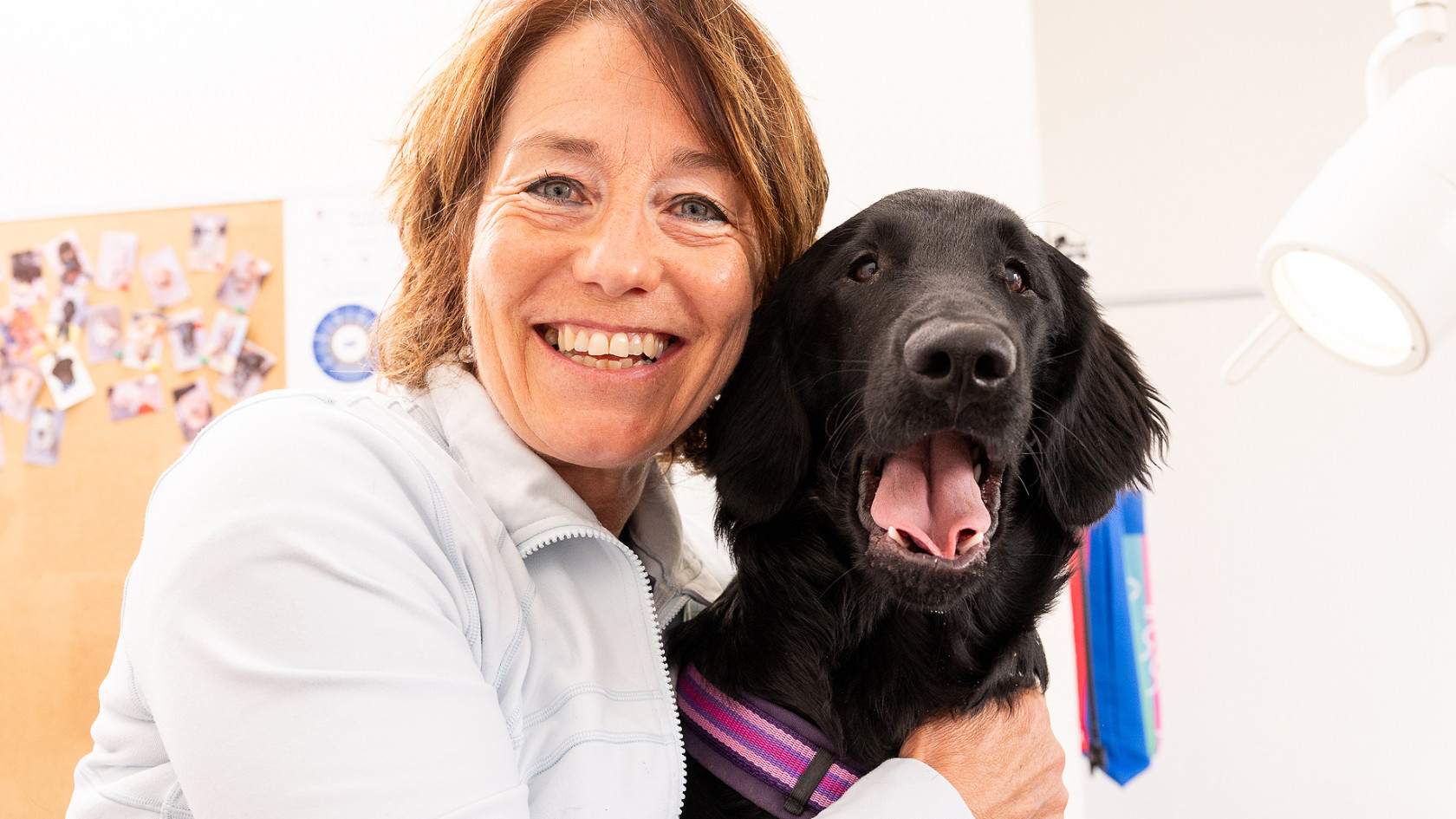Following Canine Health for Life
The Growing Dog Project at the University Animal Hospital Zurich is dedicated to healthcare provision for dogs. Veterinarians are following our four-legged friends from puppy age to the end of life, gathering extensive knowledge on canine health.
A unique project began at the Small Animal Hospital in August 2023. It tracks dogs medically and scientifically from puppy age throughout their lives. A team of experts from the University Animal Hospital Zurich wants to understand how genetics, lifestyle and environment affect the lives of our canine companions. It is the first long-term study of healthcare provision for dogs in the German-speaking world, with 86 signed up so far.
Applying successful human medicine to animals
The Growing Dog Project is led by Stefan Unterer, professor and Head of the Small Animal Hospital. He aims to translate well established documented successes in early detection and healthy living in human medicine into veterinary medicine, specifically for dogs. His approach is not yet widely shared in Switzerland, not least because of a lack of data.
Regular examinations and testing
The study is open to both younger and older puppies. They are ideally eight weeks old, and there is a 16-week cutoff for acceptance into the project. At their first appointment, they have a clinical examination, are vaccinated, and they have a first blood test to rule out any congenital conditions. The dogs’ owners also bring stool samples to be tested for parasites. There are further appointments at the ages of six months and one year. These are followed by annual recalls coordinated with regular vaccinations, dental and other checkups, and the dogs’ individual life phases.
Extensive knowledge of canine health
During each visit to the University Animal Hospital, vets take a full medical history, conduct a clinical examination, do stool and urine tests, and take samples of the dog’s hair and swabs of their skin and the inside of their mouth. With the owner’s permission, they also do a blood test. On each occasion they check the dog’s vaccination records and data on their individual health. Analysis of the online questionnaires that owners fill out at defined intervals is another important element of the study. All of this enables researchers to gather high-quality health-related data on an ongoing basis, and build an extensive body of knowledge on canine health and on the growth and ageing processes.
Better prevention, diagnosis and treatment
The research team forms part of the infectious diseases research and healthcare department at the Animal Hospital. Its aim is to be better able to predict, prevent, diagnose and treat potential diseases in dogs. To achieve this, the project includes all small animal medical disciplines: gastroenterology, dermatology, animal nutrition, dietetics and endocrinology. Specialists in nephrology, cardiology and small animal reproduction may be brought in as necessary.
Early detection
Owners participating in the Growing Dog Project are doing more than ensuring their pet remains in the best possible health long term. They also benefit from ongoing regular health check-ups and individual care. Parasites are one example of a condition that can be detected and treated before symptoms appear. In six out of the 86 dogs studied, researchers diagnosed lungworm, which can lead to lung infections and blood-thinning disorders. If untreated, it can be fatal. The project can also identify and tackle congenital disorders such as a missing gallbladder, misaligned teeth or feeding problems at an early stage.
Biobank for future research work
At each check-up, researchers take a number of samples from the dogs participating in the study. In addition to urine, stool and hair, they take swabs of inside the mouth and the skin. If the owner consents, they also take blood each time. All of these samples are stored in a freezer at -80°C. With each new dog and new sample, the content of this biobank – and its scientific value – continues to grow.
Researchers are planning to assess the gut, mouth and skin microbiome regularly in the future. Over the years, they will then be able to track changes in the diversity and composition of these microbial communities. The type and quantity of bacteria, fungi and viruses that are present or absent has a major effect on canine health. Imbalances in the microbiome often indicated illness.
By combining data from the biobank with medical histories, clinical examinations, urine, stool and blood tests and the completed questionnaires, over this long-term study researchers will be able to generate an enormous breadth of knowledge about canine health.

